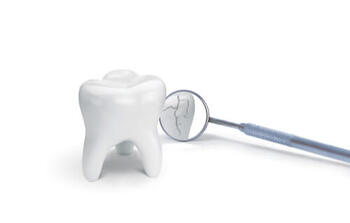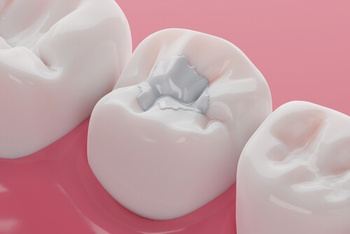
- Harris Dental Boutique
- dental filling cost, dental filling cost factors, dental filling procedure
- General Dentistry
Dental fillings are a common solution for treating cavities, but not everyone expects their teeth to feel different afterwards. If you’ve recently had a tooth filled and are now feeling unexpected zings or aches when drinking cold liquids or eating hot meals, you’re not alone. Many patients report discomfort after a routine procedure, and understanding why it happens can help ease the worry. Knowing the reasons behind sensitivity, how long it may last, and when to seek help can make a big difference in your comfort and peace of mind. Let’s look closer at what’s happening inside your mouth and how to manage it effectively.
What Causes Tooth Sensitivity After a Filling?

Nerve Irritation During the Procedure
When a dentist fills a tooth, they remove the decayed material and clean the area before adding the filling material. This process can irritate the nerve endings within the treated tooth. Even though local anaesthetic keeps the procedure stress-free, nerve tissues may become inflamed afterwards, leading to temporary tooth sensitivity. If the decay is deep or close to the tooth’s nerve, the affected tooth may respond more strongly to the treatment. Sensitivity after a filling is especially common if the filling was extensive or involved multiple tooth surfaces.
Pressure From the Filling Material
Some materials expand slightly after placement, such as silver filling or certain types of composite resin. This change can create pressure inside the tooth, triggering sensitivity. The filled tooth might also be slightly higher than the surrounding teeth, which causes uneven bite contact. If biting down triggers a sharp pain or odd sensation, this pressure could be the reason. A quick adjustment by your dentist can often resolve this issue.
Temperature Sensitivity
New fillings may increase your tooth’s reaction to hot and cold foods or drinks. Sensations like eating hot soup or sipping cold liquids may temporarily trigger discomfort. This is usually more noticeable if amalgam fillings are used since the metal reacts to temperature changes and releases heat faster than natural tooth material. Patients also tend to feel sensitivity to cold air or sugary foods for a few weeks after a filling.
How Long Will the Sensitivity Last?
Common Timeline for Recovery
It’s normal to experience tooth sensitivity after a filling for up to two to four weeks. During this time, your tooth adjusts to the new material, and the irritated nerve settles down. The level of sensitivity may decrease gradually as the tooth heals. Most people report a noticeable improvement in their symptoms during this window. In cases where sensitivity continues beyond several weeks, a follow-up visit is advised.
Factors That Influence Healing
The duration of sensitivity can vary based on several factors. These include the type of filling material used, the size of the filling, and the condition of the surrounding teeth. For instance, a larger restoration involving multiple tooth surfaces may take longer to settle. Individual responses also differ, with some patients experiencing mild discomfort while others feel sharp pain or discomfort when chewing food.
Signs to Watch For
If the sensitivity grows worse instead of improving or is accompanied by signs like swelling, persistent pain, or a bad taste in your mouth, these may be signs of further complications. An issue like irreversible pulpitis or an allergic reaction to the filling material may be present. A proper diagnosis from your dentist ensures that these issues are caught early and addressed quickly.
What Are the Different Triggers of Post-Filling Sensitivity?
Biting and Chewing
One of the most common triggers is biting down on the filled tooth. If you feel pain signals or discomfort only when biting, the filling may be too high and needs an adjustment. Referred pain may also occur, where pain is felt in teeth surrounding the filled tooth. This phenomenon called referred pain can create confusion about which tooth is actually causing discomfort.
Hot and Cold Foods
Sensitive teeth may react to eating hot meals or drinking cold liquids. This temperature sensitivity can also be felt when breathing through your mouth on a cold day. These reactions usually fade over a few weeks as the treated tooth adjusts. Avoiding hot and cold foods temporarily can help reduce discomfort during recovery.
Acidic or Sweet Foods
Foods high in acid or sugar can trigger sensitivity in newly filled teeth. Items like citrus fruits or soft drinks can irritate the already sensitive nerve endings. Reducing the intake of acidic foods and brushing gently helps protect the tooth’s nerve from further irritation. Proper dental care during this time is vital to avoid worsening the problem.
When to Seek Professional Help?
Persistent Pain or Discomfort
If you continue to feel pain after two to four weeks, this may indicate a problem that needs attention. Pain that increases rather than decreases could be a sign of nerve irritation or further decay. Contact your dentist promptly if the discomfort persists or worsens, especially if it affects your daily routine.
Checking for Allergic Reactions
Sometimes, a patient may experience sensitivity due to an allergic reaction to the filling material. Signs could include irritation in the gum tissue, unusual tingling, or discomfort beyond the expected range. If you suspect a reaction, let your dentist know immediately so the material can be replaced with a different material more suitable for your mouth.
How to Manage Tooth Sensitivity After a Filling?
Use of Pain Relievers
Over-the-counter pain relievers can help ease discomfort in the first few days following the dental procedure. Medications such as ibuprofen or paracetamol may be used, depending on your health condition. Pain relief medications should always be taken as directed by your dentist or pharmacist.
Adjusting Your Diet
Avoiding hot or cold foods and sticking to soft meals in the initial days may help manage heightened sensitivity. Chewing on the opposite side of the mouth, especially if only a single tooth was treated, can reduce pressure on the affected area. Also, avoid hard, chewy, or sugary foods during this time.
Good Oral Hygiene Habits
Maintaining good oral hygiene is critical for recovery. Brushing with a gentle toothbrush and fluoride toothpaste helps protect the tooth enamel and prevent further decay. Avoiding highly acidic mouthwashes or strong whitening products can also reduce irritation. Gentle flossing between the teeth helps remove food particles without disturbing the filling.
Monitoring the Tooth’s Condition
Keep an eye on any changes to the tooth, such as increased sensitivity, gum swelling, or new pain while chewing. Noticing changes early can prevent more serious problems like toothache or infection. Consistent dental visits are important to ensure that your filled tooth and the surrounding teeth remain in good condition.
Listen to What Your Tooth Is Telling You

Tooth sensitivity after a filling is common and usually temporary. It often reflects the tooth adjusting to the new material and the changes caused by the filling procedure. While most cases resolve in a few weeks, some instances require additional care. Paying attention to how the tooth feels and how it responds to temperature or pressure is key to spotting any potential issues. If the pain continues or affects your quality of life, don’t wait to contact your dentist. With proper care and attention, your filled tooth can return to full function without discomfort. Our clinic offers supportive care for every stage of your dental treatment, whether you’re dealing with tooth decay, recovering from a recent tooth filling, or protecting your other teeth from future damage. Please call us on 07 4158 5813 to schedule your appointment today.
References
https://www.colgate.com/en-in/oral-health/fillings/tooth-pain-after-a-filling-is-it-normal
https://my.clevelandclinic.org/health/treatments/17002-dental-fillings





